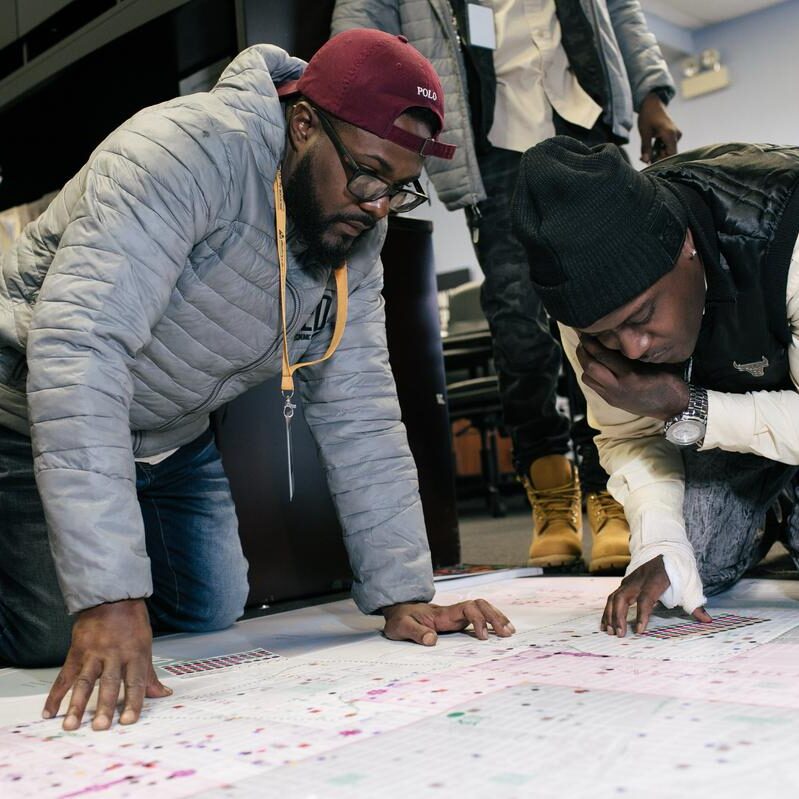CVI providers also provide a platform of ancillary program services in the following areas: Behavioral Health Services, Workforce Development and Education; and Legal Aid.
Behavioral Health Services (BHS).
Select CVI providers have a team of Clinical Supervisors and Mental Health Specialists who will provide behavior health services for CVI participants and their family members.
Clinical interventions include: Crisis interventions; Group counseling supports – which include the facilitation of healing circles and peer support groups; Social-emotional learning through a trauma- informed lens for helping clients learn critical skills for anger management; de-escalation; sensory stabilization; coping strategies; thoughtful decision-making; self-care; and Short-term clinical individual sessions.
CVI service providers uses Evidence-Based Practices (EBPs) that align with and support the delivery of high quality clinical services based on a Recovery and Resiliency model. The focus of this engagement addresses participant expectations and perceptions of services, and to help de-stigmatize perceptions of seeking therapy.
CVI service providers work to educate participants, partner stakeholders, and the wider community on the importance of social emotional wellness, the impact of trauma and living in communities with high levels of violence, and resiliency. The purpose of these short-term sessions is to clinically address participants immediate clinical needs, understand level of functioning and trauma through the completion of psycho-social assessments and establishing an initial treatment plan with recommendations for longer-term clinical interventions. CVI service providers also uses motivational interviewing to assist with tapping into the client’s internal resources, creating a collaborative environment driven by the participant, and allowing for a client-centered approach to disclosure of symptoms, trauma, history, etc.
Select CVI providers administer care coordination and advocacy supports to help clients navigate and access needed treatment services. For clients in need of longer-term mental health and or substance use treatment supports, staff directly transition clients to BHS resources available through their partner networks.
Workforce Development.
CVI providers offer workforce development resources, across a work experience continuum to address skill sets/strengths, and career interests, to participants. CVI providers administer job coaching, intensive case management, employment training/placement, and retention services. They also offer transitional job placements and access to basic certificate training for participants interested in industry-specific jobs/sectors. Workforce development staff employ a holistic workforce approach focused on financial literacy, education, training and supportive services to ensure successful outcome of self- sustaining gainful employment. Teams also engage and incentivize participants to acquire their GED and provide academic coaching and supports to recipients in preparation for the GED examination.
Legal Aid.
Select CVI service providers administer legal aid teams consisting of trained Staff Attorneys and Paralegals who provide education, training, legal service and advocacy supports for participants and their families. Program staff administer “community lawyering” services that provide immediate access to legal resources for populations with traditionally limited access to services. CVI legal staff provide services in designated communities at the CVI-provider site. Staff conduct Know Your Rights clinics/trainings, specifically targeting returning citizens and families impacted by incarceration. Staff engage residents in need of legal services and assess the need to provide more comprehensive legal representation – from brief application filings/legal documentation to more long-term legal efforts. Staff attorneys have expertise in diverse legal areas (expungement, civil rights, family law, housing; employment; victim rights, as examples) to adequately respond holistically to CVI participants and their families in the designated communities.

